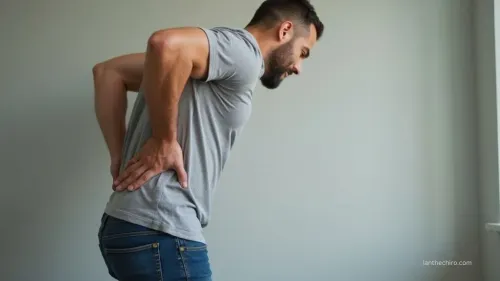Myofascial Trigger Point Therapy Vs Dry Needling: Which Works Faster for Malaysian Muscle Pain?
If you’re seeking faster relief from Malaysian muscle pain, dry needling usually works quicker than myofascial trigger point therapy.
Dry needling goes straight to the source, using thin needles to deactivate muscle knots and trigger rapid tension release, often after just one session. Trigger point therapy, while effective and non-invasive, typically needs more appointments for noticeable results.
If you want to know which approach fits your pain level and lifestyle best, there’s more practical guidance just ahead.
Understanding Muscle Pain in Malaysia: Common Causes and Triggers

Whether you're an athlete or spend most of your day at a desk, muscle pain is a common concern in Malaysia due to a mix of lifestyle and environmental factors. Overuse from sports or manual labor, repetitive movements, and injuries can overload muscles, leading to myofascial trigger points, those painful knots that cause persistent discomfort and stiffness.
Poor posture, especially from long hours at a desk, further contributes to muscle pain. Malaysia’s humid weather and inadequate ergonomic setups can worsen muscle tension.
If you skip proper stretching or warm-up routines, or lead a sedentary lifestyle, your risk of developing trigger points increases. Recognising these common causes helps you address muscle pain early and make practical changes to reduce ongoing discomfort.
How Trigger Point Therapy Relieves Deep Muscle Tension
When deep muscle knots limit your movement and cause persistent pain, trigger point therapy offers a targeted solution by applying sustained manual pressure directly to these sensitive areas. By focusing on the trigger point, this manual therapy increases blood flow, delivering essential oxygen and nutrients to accelerate muscle healing and reduce soreness.
Applying precise pressure can also decrease nerve sensitivity, which helps minimise both local and referred pain. Techniques like ischemic compression and sustained pressure are clinically shown to break the cycle of muscle tightness and restore normal muscle function.
If you’re dealing with stubborn muscular tension, consistent manual therapy sessions can gradually deactivate hyperirritable muscle knots and improve your mobility. This approach is practical for ongoing muscle pain management, especially when combined with other rehabilitation strategies.
What Is Dry Needling and How Does It Work?

Although dry needling may seem similar to acupuncture, it’s a distinct clinical technique that specifically targets myofascial trigger points.
When you undergo dry needling, a trained practitioner inserts sterile, thin needles directly into these trigger points. This action provokes a local twitch response, which quickly releases muscle knots and eases pain.
By targeting these hyperirritable spots, dry needling increases blood flow and oxygen delivery to the affected tissues, helping your muscles heal faster.
The technique is minimally invasive and focuses on restoring normal muscle function rather than just managing symptoms.
If you’re struggling with persistent muscle tightness, dry needling offers a clinically supported option to address the underlying problem and promote long-term relief by deactivating trigger points and accelerating tissue repair.
Which Works Faster? Comparing Relief Speed and Results
If you’re looking for the fastest route to muscle pain relief, dry needling generally delivers quicker results than myofascial trigger point therapy.
Dry needling works by inserting thin needles directly into the trigger point, causing a local twitch response that rapidly reduces muscle tension. Clinical studies show that many patients experience noticeable pain relief and improved mobility after just one session of dry needling.
Dry needling quickly eases muscle tension and boosts mobility, often providing noticeable relief after just one session.
In contrast, trigger point therapy relies on sustained manual pressure, often requiring multiple sessions before you notice significant changes.
While both methods are effective for treating muscle pain, dry needling’s direct approach targets deep-seated trigger points more efficiently, speeding up tissue healing and muscle relaxation.
If rapid results are your priority, dry needling is usually the faster option.
Choosing the Right Approach for Your Pain, Lifestyle, and Goals

While dry needling often brings faster pain relief, choosing the best treatment depends on your specific pain, lifestyle, and recovery objectives.
If you’re dealing with stubborn or severe muscle pain, dry needling may offer more immediate results by directly targeting the trigger point and disrupting muscle tension.
For those who prefer a non-invasive approach or have a history of sensitivity, myofascial trigger point therapy’s manual techniques could be a better fit, though it may take several sessions to achieve lasting relief.
Your activity level matters, if you need quick recovery to stay active, dry needling might suit you.
Ultimately, align your choice with your comfort, pain tolerance, and long-term goals, discussing options with a qualified practitioner to ensure the best outcome.
Frequently Asked Questions
Which Is Better, Dry Needling or Trigger Point Injections?
Dry needling is a good option for those seeking quick, low-risk relief without medication. Trigger point injections may be more effective for severe or persistent pain but involve medication and carry a slightly higher risk of side effects. Your choice should depend on your symptoms, medical history, and practitioner’s advice.
How Long Does It Take for Dry Needling to Work?
Dry needling can relieve symptoms within minutes to 48 hours. Some people feel better right away, while others need a few sessions. Results vary depending on the severity of your condition and the practitioner’s technique.
Does Dry Needling Help Myofascial Pain?
Yes. Dry needling is commonly used to treat myofascial pain by targeting trigger points directly. Many patients report faster pain relief and better function compared to manual therapy alone, usually within a few sessions.
Conclusion
Think of your journey to muscle pain relief as choosing the right key for a stubborn lock.
Myofascial trigger point therapy and dry needling are both precise tools, each opens relief in its own way. Evidence shows dry needling may turn the key faster for some, while trigger point therapy offers a steady, hands-on approach.
Your best choice depends on your pain’s pattern, your lifestyle, and how quickly you need that door to comfort opened.














